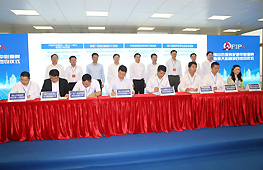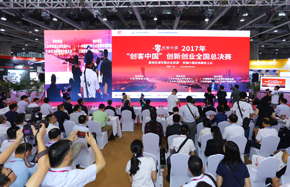Micro-center construction boosts civic development
In 2018, China's urbanization rate was 59.58 percent. Urban agglomeration, as a main form of new-type urbanization, is gradually driving the acceleration of urbanization in China. When the urbanization rate reaches 60 to 70 percent, metropolis circles within the agglomeration will become urbanization's principal driver. On March 27, at the Boao Forum for Asia, Gu Qiang, head of the Industry Research Institute of the China Fortune Land Development Co, Ltd (CFLD), expressed the opinion that micro center construction will benefit high-quality civic development.
Gu pointed out that a metropolis circle is a highly integrated network town system. A micro- center is an important part of a metropolis circle. The gap between the metropolitan areas of China and their international counterparts is not in the core areas, but in the micro-center and node cities. Tokyo for example consists of five cities with populations of 500,000 to 1 million, 18 with populations of 200,000 to 500,000 and 84 with populations of 50,000 to 200,000 while the corresponding figures for Beijing are 2, 7 and 8. Putting node cities and micro-centers into the spatial planning of metropolis circles is an inevitable requirement of sustainable development in metropolitan areas.
At present, the development of micro-centers and nodal cities in metropolitan areas in China is seriously inadequate, and the construction of cross-city traffic is very backward. For example, the Beijing suburban railway covers only 290 kilometers, far less than Tokyo's 4,476 kilometers and London's 3,076 kilometers. In Beijing commuting to work takes an average of 72 minutes. In Gu's view the solution to this situation is to construct micro-centers with Transit-oriented Development (TOD) and Service-oriented Development (SOD).
Gu said that the new town constructions of London and Tokyo are based on TOD and SOD ideas. China should push forward TOD while promoting SOD as well to improve a basic public service sharing mechanism and boost the integrated development of industries and the city. He suggested that the comprehensive transportation system should integrate interurban railways, suburban railways and urban railways and improve the regional highway network.
Micro-centers should include high-tech industry, airport economy and health care service; they could be a comprehensive new urban area such as Gu'an New Industry City.
Gu'an was developed under the PPP mode (Public-Private-Partnership) mode in which social capital is responsible for the new town's plan and design, construction, industrial development and operation, while the government is in charge of top-level design, government review and approval and public service supervision. At the end of the cooperation period, all public infrastructure and services are transferred to the government, which is an innovation and exploration of the PPP mode.
The CFLD's expansion from Gu'an benefits from the spillover effect of Beijing's population and industries, which provides references for further expansion across the country. At present, the CFLD has programmed spillover circles of core cities, such as Beijing and Shanghai, in 15 metroplitan areas, enjoying bonuses from the value elevation of node-cities surrounding the quickly developing metropolitan areas.
Gu added that metropolitan areas have been promoted as a national strategy. With the guidance of the government, they can be developed in a coordinated manner. In the current situation, metropolitan areas should further broaden financing channels. By PPP channels, asset securitization and financing and leasing in metropolitan areas should attract social capital to take part in infrastructure construction, public service supply and new town construction, which would reduce the risk of government debt and improve metropolitan urban systems while upgrading urbanization levels in peripheral areas.





















